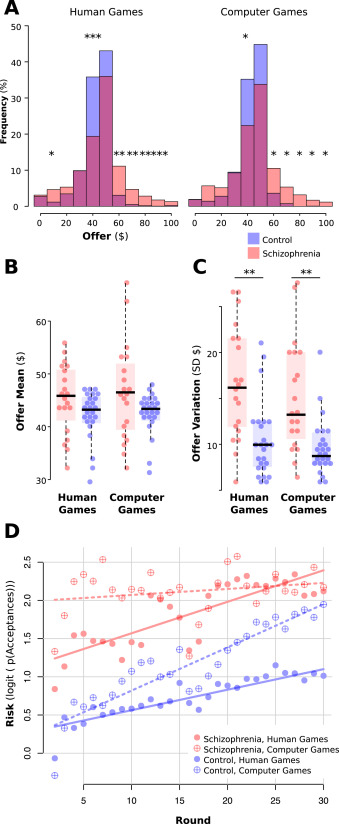
THE ADAPTABILITY TO THE OPPONENT’S GAME
People with schizophrenia show social disabilities that are related to functional outcomes. In this project we tested the hypothesis that social interaction disabilities in people with schizophrenia are related to alterations in the predictions of the behavior of others and explore their underlying neurobiological mechanisms. The neurological correlate of behavior is studied in a game that represents a negotiation situation between two parties. As the game is repeated, the adaptability of the strategies executed by the experimental subjects can be observed. We perform a test-by-test correlation between oscillatory activity and supply risk.
These results reveal an alteration in social interaction in patients with schizophrenia that is related to oscillatory brain activity, which suggests a mismatch of expectations when patients face social and not social agents. This alteration is related to psychotic symptoms and could guide other therapies to improve social functioning in patients with schizophrenia.

SOCIAL NEUROSCIENCE
This project is part of the emerging subdiscipline of Social Neuroscience. Its interdisciplinary nature comes from the use of an experimental paradigm based on game theory allowing the recording of neurophysiological activity in an intersubjective context. From the perspective of social decision models, this work sheds light on the cognitive mechanisms involved in the decision-making process and the formation of expectations. The results of the comparison between subjects of normal population and schizophrenic subjects can inform both the characterization of the disease and its future diagnosis.
Researchers
|
|
Pablo BillekePrincipal ResearcherPh.D. en Ciencias Médicas, Pontificia Universidad Católica de Chile. |
|
|
Francisco ZamoranoPh.D en Ciencias Médicas Pontificia Universidad Católica. |
Products


